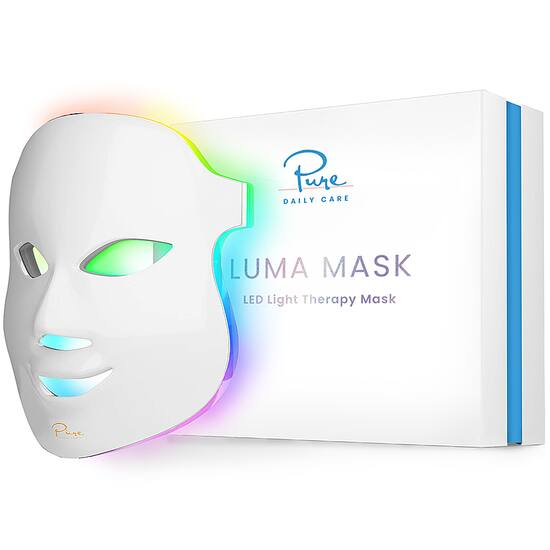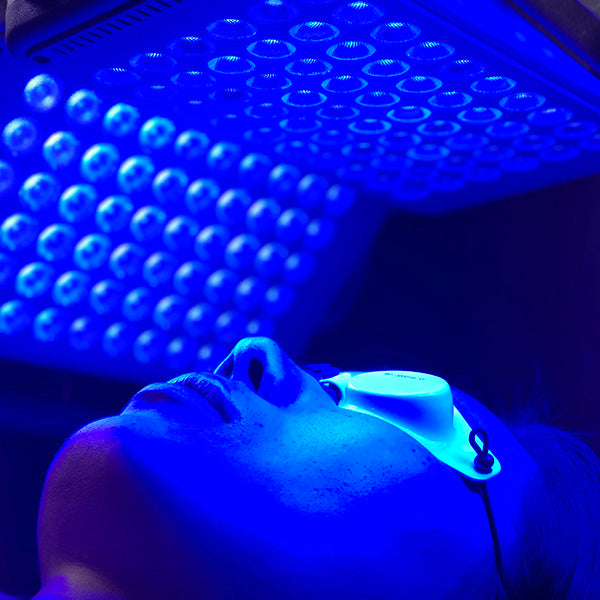Photobiomodulation Therapy: A Sign of Expect Chronic Conditions
Wiki Article
Opening the Possible of Photobiomodulation: A Promising Approach for Restorative Treatment
Are you interested regarding the possibility of photobiomodulation for restorative treatment? By targeting specific cellular processes, photobiomodulation has shown possible in speeding up wound healing, decreasing discomfort, and advertising tissue regeneration. In this introduction, we will certainly discover the mechanisms of activity, applications in medicine, and the existing proof supporting the effectiveness of photobiomodulation.Comprehending Photobiomodulation
To comprehend photobiomodulation, you need to understand the concept of exactly how light treatment can directly influence cellular processes in your body. Photobiomodulation, additionally known as low-level light treatment, is a non-invasive treatment that makes use of particular wavelengths of light to boost biochemical reactions in your cells.The restorative effects of photobiomodulation are far-reaching and have been studied thoroughly in various medical areas. It has actually shown appealing lead to advertising tissue repair and regrowth, reducing inflammation, relieving discomfort, and boosting wound healing. Photobiomodulation has been located to have a positive influence on neurological problems, such as traumatic mind injury and stroke, by promoting neural task and promoting neuroplasticity.
Among the crucial advantages of photobiomodulation is its safety and security account. Unlike other therapies, photobiomodulation does not generate any warmth or trigger tissue damages. It is a non-invasive and pain-free procedure that can be done in a scientific setup or perhaps in the comfort of your own home with the usage of mobile devices. It is vital to note that photobiomodulation needs to be administered by trained professionals or according to the producer's instructions to guarantee optimal outcomes and safety and security.

Mechanisms of Activity
In comprehending the mechanisms of activity, you will uncover exactly how photobiomodulation directly affects cellular procedures through details biochemical responses. When light is put on the body, it is soaked up by chromophores, such as cytochrome c oxidase and flavins, which exist in the mitochondria. This absorption causes a cascade of occasions that ultimately cause cellular adjustments.One of the vital mechanisms of activity is the excitement of ATP production. Photobiomodulation raises the activity of cytochrome c oxidase, an essential enzyme in the mitochondria that is associated with the electron transport chain. This boosted activity causes the manufacturing of more ATP, the primary power money of the cell. As an outcome, mobile metabolism is boosted, advertising tissue fixing and regeneration.
In addition, photobiomodulation has been shown to modulate mobile signaling paths. It activates various development variables and signaling molecules, such as nitric oxide and reactive oxygen types, which play vital roles in procedures like angiogenesis, swelling, and cell spreading. These signaling paths add to the therapeutic results of photobiomodulation, promoting tissue healing and decreasing discomfort and swelling.
Applications in Medication
Discover the extensive applications of photobiomodulation in medicine. Photobiomodulation, likewise understood as low-level light treatment, is a non-invasive therapy that makes use of light to boost mobile procedures and advertise healing. In medicine, this method has shown promising results across various fields.One of the key applications of photobiomodulation is in pain administration. pbm light therapy. It has actually been utilized to minimize both severe and chronic discomfort, consisting of musculoskeletal conditions, neuropathic pain, and post-operative pain. By targeting the damaged location with certain wavelengths of light, photobiomodulation can minimize inflammation, promote cells repair service, and offer relief
Additionally, photobiomodulation has actually shown prospective in wound healing. It can increase the recovery process by boosting cell spreading, promoting angiogenesis, and reducing scar cells development. This has considerable implications in the therapy of chronic wounds, such as diabetic person ulcers and stress sores.
In dermatology, photobiomodulation has been used for its anti-inflammatory and regenerative effects. It can boost the appearance of marks, minimize acne lesions, and boost hair growth in problems like androgenetic alopecia.
In addition, photobiomodulation has revealed assurance in neurorehabilitation. It can improve cognitive feature, enhance electric motor healing, and aid in the therapy of neurodegenerative diseases like Alzheimer's and Parkinson's.
Scientific Evidence and Study Searchings For

In the field of musculoskeletal disorders, photobiomodulation has been discovered to decrease pain and inflammation, improve variety of activity, and speed up cells fixing. In addition, photobiomodulation has actually revealed favorable results on injury healing by promoting collagen synthesis, angiogenesis, and fibroblast proliferation.
Furthermore, research has actually revealed that photobiomodulation can have neuroregenerative and neuroprotective impacts. It has actually been discovered to improve cognitive feature, lower neuroinflammation, and improve neuronal survival and synaptic plasticity. This has essential implications for the treatment of neurological problems such as Alzheimer's illness, Parkinson's disease, and stroke.
Future Directions and Possible Difficulties
Moving onward, it is essential to consider the future instructions and potential difficulties surrounding the usage of photobiomodulation as a therapeutic treatment. Currently, there is no consensus on the optimum wavelength, intensity, period, and frequency of photobiomodulation treatment.An additional essential future instructions is the development of portable and affordable photobiomodulation gadgets. While existing devices work, they are commonly large, pricey, and require expert guidance - photobiomodulation therapy. The growth of inexpensive and user-friendly tools would greatly improve availability to this treatment, allowing more people to take advantage of its potential restorative impacts
In addition, future study should focus on illuminating the systems underlying photobiomodulation. Regardless of its expanding appeal, the exact mechanisms whereby photobiomodulation exerts its therapeutic impacts are not completely comprehended. Comprehending these systems would certainly not just improve our expertise of the treatment however likewise help in the advancement of even more targeted and effective interventions.
Nonetheless, there are additionally prospective difficulties that need to be dealt with. pbm light therapy. These consist of the need for standard protocols, the need for properly designed clinical tests with bigger example sizes, and the need for long-term follow-up researches. Governing and safety and security considerations must be taken right into account to make sure the safe and effective usage of photobiomodulation in scientific method.
Verdict
In conclusion, photobiomodulation holds terrific pledge as a healing treatment in medication. With recurring researches and developments in this field, photobiomodulation has the possible to open brand-new possibilities for improving client results.Are you curious about the potential of photobiomodulation for therapeutic intervention? By targeting particular cellular processes, photobiomodulation has shown potential in accelerating photobiomodulation wound healing, decreasing pain, and promoting tissue regeneration.In addition, photobiomodulation has shown potential in wound recovery.Relocating onward, it is vital to take into consideration the future directions and potential obstacles surrounding the use of photobiomodulation as a restorative treatment. With continuous research studies and improvements in this field, photobiomodulation has the potential to unlock brand-new opportunities for enhancing client outcomes.
Report this wiki page